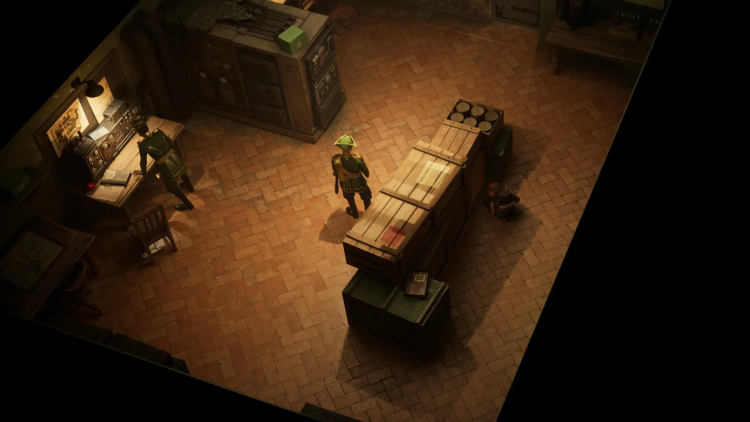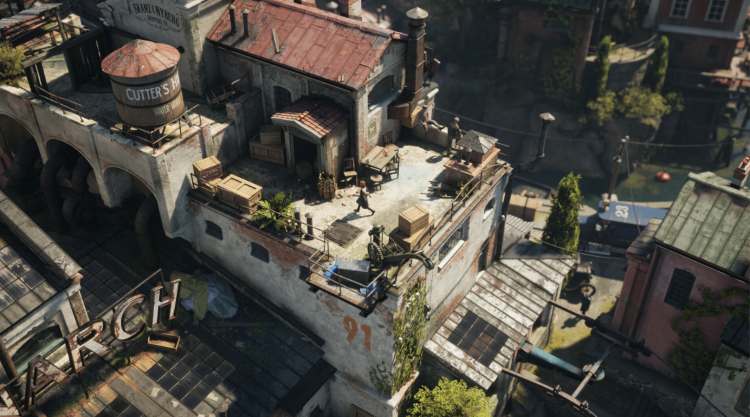Eriksholm: The Stolen Dream Has “Iffy Story” But It Might Catch You, Says Eurogamer
Eriksholm: The Stolen Dream is a stealth tactics game that blends puzzle-like encounters with stylish presentation, delivering consistently satisfying gameplay but faltering in narrative drive and finale. Its moment-to-moment play is rewarding, every mission feels handcrafted, and the city itself is a visual treat. Yet, when the credits roll, the story leaves little emotional mark, holding it back from being truly great.
The stealth tactics genre has been searching for its next standout since Mimimi Games, creators of Shadow Tactics, Desperados 3, and Shadow Gambit, shut down. River End Games—a studio of veterans with credits ranging from Unraveled 2 to Battlefield—has stepped up with Eriksholm: The Stolen Dream. According to Eurogamer’s review, it aims for a deliberate, stripped-down approach that focuses on core stealth fundamentals.
A Tighter, More Focused Stealth Experience
You begin the game as Hanna, the agile and resourceful lead character, navigating her neighborhood while evading a heavy police presence. There’s no instant access to weapons or flashy gadgets; the early stages are about learning the rhythm of cover, shadows, and distractions. The tension comes from timing and observation rather than brute force.
Offensive tools appear slowly. You might gain the ability to toss pebbles to lure guards or use a mid-range blow dart for a stun. Later, Sebastian, the physically imposing member of the crew, can choke enemies and swim across water obstacles—making him uniquely suited for certain maps. Alva, the third playable character, can climb drainpipes and traverse vertical routes others can’t.
These abilities aren’t revolutionary individually—they’re familiar to anyone who’s played stealth tactics before. What makes them engaging is how River End Games spreads them across three characters and then designs missions around switching between them in the right sequence. You’re essentially playing a co-op stealth game solo, controlling each operative in turn to pull off multi-step plans.

Puzzle First, Sandbox Second
It’s important to understand what Eriksholm is not. This isn’t a freeform sandbox where you can mix abilities at will. The game decides which characters and skills are available in each mission, and for much of the campaign, you don’t have the full team together.
That structure reveals its true nature: Eriksholm is closer to a puzzle game than an open-ended stealth sim. Each encounter is built with a “correct” solution in mind. Guard A must be taken down before Guard C, but only after you’ve distracted Guard B, and only when environmental hazards are positioned just so.
Some players might find that limiting. But for those who enjoy reading guard patrols, noting cover placement, and figuring out timing, it’s deeply satisfying. The game’s difficulty feels finely tuned—challenging enough to keep you on your toes without becoming frustrating. Trial and error plays a role, but success often comes from careful observation.
When all three characters are working in sync, you can pull off intricate plans where each move flows into the next, producing a sense of orchestrated precision. It’s a small thrill every time a risky sequence plays out exactly as intended.

A City Worth Sneaking Through
The setting is one of Eriksholm’s greatest strengths. The fictional city, inspired by early-1900s Scandinavia, borrows architectural and atmospheric cues from northern France, Britain, and the rugged coastlines of Scotland. The result is a world that feels grounded yet distinct.
You’ll creep through narrow alleys lit by gas lamps, weave through cluttered docks and shanty towns, and infiltrate medieval fortresses upgraded with WWI-era technology. Mossy coves and industrial yards add variety, each space packed with believable environmental details.
The camera is pulled back, masking budget constraints, but the art direction makes up for it. Levels are designed to look lived-in, with weathered textures and clutter that suggest a world beyond your mission.
Cutscenes, though rare, are a visual highlight. Pre-rendered sequences feature expressive facial animation and subtle performances that communicate emotions—hesitation, determination, concealed fear—without spelling them out. You can tell these were expensive to produce, but they’re deployed sparingly, possibly to ensure they remain impactful.
Where the Story Falls Short
The plot itself is serviceable but lacks weight. It moves you from one environment to the next, but it doesn’t generate much urgency or emotional pull. The central antagonist’s motivation remains thinly sketched, making it harder to invest in the overarching stakes.
The game leaves some gaps for players to fill, which can work well when there’s rich lore or intriguing mysteries. Here, it feels more like missing connective tissue than intentional ambiguity. The conspiracy thread is there, but it’s not backed by enough detail to make you care deeply about unraveling it.
That said, there are pockets of strong character writing. Alva, for instance, is a compelling figure—a streetwise operator running her own territory with a network of young thieves. She balances ruthless pragmatism with flashes of maternal instinct, creating a tension that feels real. If Eriksholm ever gets a sequel, she could easily carry it.
The writing also shines in incidental moments: overheard arguments between couples, petty squabbles among guards, a subplot about a cheating spouse. These touches make the world feel alive and, at times, inject humor into otherwise tense missions.

Set-Pieces That Deliver
While the ending underwhelms, the journey there includes memorable sequences. You might find yourself sneaking through a hedge maze patrolled by guards, threading through shifting sightlines while coordinating multiple characters. Another mission places you in the middle of a battle, weaving between combatants to silently remove key targets without being noticed.
Environmental variety plays a big role. Some areas encourage vertical movement, others emphasize water routes or tight, maze-like corridors. The design keeps you adapting, and the best missions reward you with moments where every tool and skill comes together seamlessly.
The Ending Problem
After all the careful buildup, the finale lands with a thud. Instead of a playable climax—a last, high-stakes infiltration or desperate escape—it shifts into a non-interactive cutscene. There’s no final mission that tests your mastery of the mechanics or ties together the characters’ arcs.
This abruptness makes the game feel like it ends mid-stride. Given the quality of the stealth sequences earlier, it’s a missed opportunity to leave players with a truly standout moment.
A Split Verdict
Eriksholm: The Stolen Dream is a game of contrasts. On one hand, its level design, mechanics, and visual presentation are consistently strong. It respects your intelligence, asking you to observe, plan, and execute with precision. The satisfaction of a well-executed plan never wears thin.
On the other hand, its narrative lacks the hooks and stakes to fully carry you through, and the ending feels incomplete. The characters have potential, but only flashes of it are realized.
Still, for players who value gameplay first, this is a polished, rewarding experience. The stealth genre benefits from having more titles like this—focused, skill-driven, and willing to commit to a specific design philosophy rather than chasing total freedom.
In the end, Eriksholm might not reach the heights of the genre’s best, but it’s a worthy addition for fans who want tense, cleverly constructed stealth puzzles set in a richly imagined world. If you can forgive the lack of narrative punch, you’ll find plenty to enjoy in the shadows of its streets.

Comments